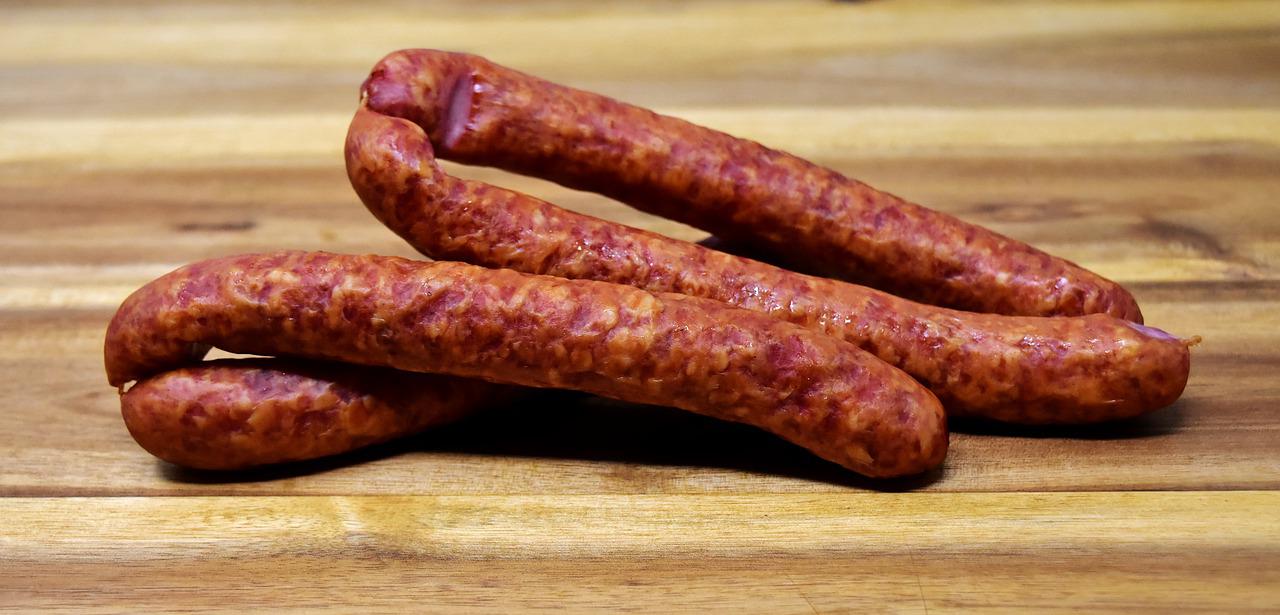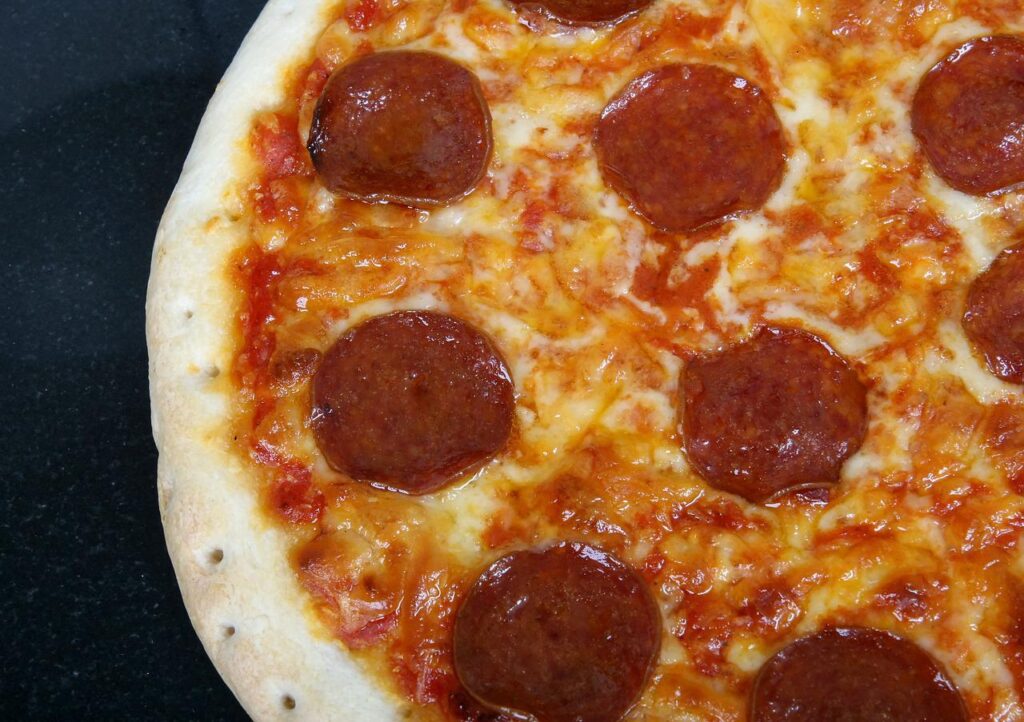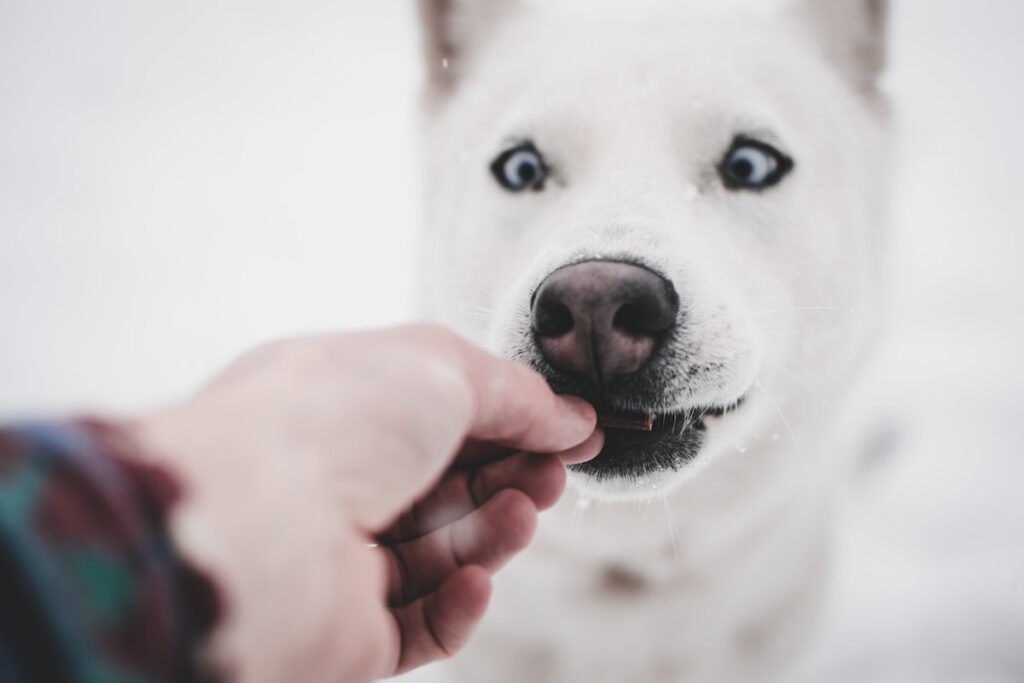Table of Contents
Dogs have a deep love affair for meat. This is a fact most pet parents are aware of, which explains why dog owners generally do not think twice about sharing meat-based foods with their canine friends.
But the fact that a given food product is made from meat doesn’t automatically qualify it as safe or nutritious for dogs. And much less if the food in question is prepared using methods that could render it toxic or less nutritious.
In light of these insightful perspectives, can dogs eat pepperoni?
Dogs should not eat pepperoni. The main reason pepperoni isn’t recommended for dogs is that it’s laden with unhealthy amounts of fat and sodium. Besides, the food is made from processed meat, which is generally considered unhealthy for humans and canines alike.
If you’ve always been toying with the idea of sharing pepperoni with your pooch, experts advise that you reconsider. Join me as I delve deeper into all the potential risks of pepperoni for your furry canine companion.
What Is Pepperoni?
Pepperoni refers to an American variety of spicy salami. The food is typically made from cured pork or a mixture of cured pork and beef, which is then seasoned with paprika and various other chili peppers. Turkey meat is often used as a substitute for pork and beef.
After preparation, pepperoni undergoes a rigorous curing process to preserve its shelf life. Nitrates and nitrites are the most common curing agents. These compounds help protect the product against microbiological decomposition that could lead to health concerns like botulism.
Pepperoni tends to be soft, bright red, and slightly smoky before cooking. Nitrates and nitrites are responsible for the bright-red color, due to their reactions with heme in the myoglobin found in the proteinaceous components of the meat. However, the color, appearance, and texture of pepperoni may change significantly depending on how the food is prepared.
Pepperoni can be consumed as a standalone meal or used as a topping for other foods. For instance, thinly-sliced pepperoni is a common pizza topping in American pizzerias while deep-fried pepperoni is usually served as a standalone dish in the Canadian province of Nova Scotia.
What Nutrients Does Pepperoni Contain?
Not only does pepperoni enjoy a reputation for being finger-licking delicious. The food also packs some beneficial nutrients.
The fact that pepperoni is made from meat makes it a decent source of animal protein. The food is also incredibly high in fats and calories.
A 100-gram serving (roughly 3.5 ounces) of pork pepperoni provides the following nutrients;
• Energy – 1,940 kilojoules or 460 kilocalories
• Protein – 20. 35 grams
• Carbohydrates – 4 grams
• Fat – 40.2 grams
In addition to the above nutrients, pepperoni also contains several vitamins and minerals. Notable ones include vitamins B6, B12, C, and D, as well as calcium and magnesium.
However, the primary focus when considering feeding pepperoni to your dog is not how nutritionally dense this food is. Rather, the safety of the ingredients used in preparing it. And as you’re about to find out, nearly all those ingredients could trigger severe adverse reactions in your pooch.
What Makes Feeding Pepperoni To Dogs Such A Bad Idea?
1. Excessive Amounts of Sodium
Pepperoni contains worrying levels of sodium. The sodium content in pepperoni mainly exists as common salt (sodium chloride). However, it could also come in the form of curing agents like sodium nitrates and sodium nitrites, although there’s a range of other nitrate and nitrite salts that can be used as pepperoni preservatives.
Excess amounts of sodium in your dog’s diet can trigger a raft of health problems.
First, a high salt intake is associated with dehydration. You can tell that your dog is dehydrated if he drinks more frequently than he should. Dry eyes, dry nose, and thick saliva are also tell-tale signs of dehydration.
Excess salt consumption could also trigger sodium ion poisoning (also known as salt poisoning), a life-threatening disease that attacks your dog’s kidneys and bladder. Early warning signs of sodium ion poisoning include excessive thirst sensation and infrequent urination. As the disease progressively damages your dog’s kidneys, you’ll start to notice symptoms like frequent drinking followed by frequent urination. Other common symptoms of salt poisoning include vomiting, diarrhea, appetite loss, abdominal discomfort, dry gums, and seizures. Without timely interventions, the disease may degenerate into a coma and eventually death.
2. High Fat Content
Pepperoni is a fat-laden food. A 100-gram serving of pork pepperoni provides as many as 40 grams of fat.
Fat plays several vital roles in a dog’s body. Most notably, it acts as a substrate for energy production.
However, excessive fat consumption will more likely hurt your pooch than help him.
Stomach irritation is the immediate adverse effect of consuming fatty foods. Eating too much fat can produce a laxative effect, leading to diarrhea and abdominal discomfort.
Fat is also the leading cause of unhealthy weight gain. This can be a big problem, particularly for lapdogs and other dog breeds that are not naturally given to exercise. And depending on the breed’s size, obesity and overweight may come sooner than you can expect.
Last but not least, fat could cause or worsen the symptoms of certain chronic illnesses. These range from pancreatitis and inflammatory bowel disease (IBD) to diabetes, arthritis, hypertension, and even heart disease.
3. High Calorie Count
With 1,940 kilojoules in a 100-gram serving, pepperoni boasts one of the highest calorie counts of all meat-based products.
Dogs require moderate amounts of calories in their diets. It helps supplement their energy requirements.
But just like fats, high-calorie diets can prove more hurtful than useful to your canine friend.
Calorie-dense foods can contribute to rapid weight gain. Besides, they can lead to various long-term health issues, including obesity and diabetes.
4. Spices
Pepperoni is usually seasoned with paprika. But the food can contain a long list of other spices, including peppers, cayenne, fennel seeds, black peppers, onions, and garlic.
Most spices are considered harmful to dogs. That’s especially true for spices in the allium family, such as garlic and onion.
For starters, onion and garlic can irritate your dog’s digestive system, leading to flatulence, diarrhea, and abdominal pain. But perhaps the biggest risk of these spices is their tendency to cause a severe form of hemolytic anemia known as Heinz body anemia.
Heinz body anemia results from oxidative damage to your dog’s red blood cells.
When garlic and onion get to your dog’s bloodstream, the active compounds in these spices oxidize the oxygen-transporting protein in the red blood cells, called hemoglobin. The oxidation of hemoglobin results in the formation of clumps, which inhibit the protein’s ability to transport oxygen to the dog’s vital organs. It’s these clumps that are known as Heinz bodies.
Heinz body anemia produces anemia-like symptoms like generalized fatigue, paleness of the skin and gums, breathing problems, and appetite changes. The condition can be fatal if not remedied early enough.
Besides onion and garlic, other potential causes of Heinz body anemia include methylene blue and maple leaves.
5. Low Quality Meat
Pepperoni may contain meat (a dog’s favorite food) as its primary ingredient. However, the quality of meat used in pepperoni has been a subject of concern for years. That’s primarily due to the curing processes involved.
Curing may prolong pepperoni’s shelf life, alright. But it also reduces the meat’s quality in the long run.
Besides, the numerous additives in pepperoni may only degrade the food’s quality even further.
What If My Dog Accidentally Eats Pepperoni?
Given its inherent dangers for dogs, it’s important to keep pepperoni out of your dog’s reach at all times.
That includes clearing the dinner table immediately after having a pepperoni snack. It also means sealing trash cans tightly to prevent your canine friend from rummaging through the containers scavenging for pepperoni leftovers. And if there’s any unconsumed pepperoni in the house, be sure to store it in the refrigerator or lock it in cabinets that your pooch cannot access.
But as the saying goes, you can never be too careful. There may be times when your dog sneaks up behind your back and helps himself to pepperoni.
The best course of action if you discover that your dog has accidentally eaten pepperoni is to establish the portions consumed. This will help you predict the severity of side effects. While a slice or two may not trigger worrying symptoms, eating a few mouthfuls is reason enough to schedule a visit to the vet.
Summary
Pepperoni may be yummy, delicious, and somewhat nutritious for humans. But the food is potentially harmful to dogs.
If you’re looking for the best meaty treats for your canine friend, insist on plain beef, poultry, or seafood.





